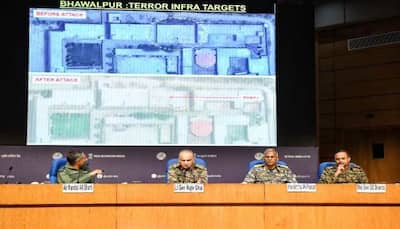New Delhi: In a bold and unprecedented move, in the wee hours of May 7, India launched ‘Operation Sindoor’ – a massive retaliatory strike deep inside Pakistan and Pakistan-Occupied Jammu & Kashmir (PoJK), avenging the April 22 barbaric killing of innocent civilians in Jammu and Kashmir’s Pahalgam.
What unfolded was not just a military response; it was a seismic shift in India’s national security doctrine and a statement of strength, resolve and strategic clarity. India has made it clear: terror will be punished – anytime, anywhere. And if provoked again, India not only knows how to strike, it knows where to hurt.
The operation proved to be highly successful with sweeping implications for regional and global counterterrorism.
Here’s what India achieved from military strike:
India’s armed forces neutralised nine high-value terror launchpads belonging to Lashkar-e-Taiba, Jaish-e-Mohammed and Hizbul Mujahideen. Key to training and orchestrating attacks on Indian soil, these camps were wiped out with clinical precision.
India shattered the old rules of engagement by striking hundreds of kilometers inside Pakistan, including its Punjab province that is a bastion of military strength.
Critical terror hubs like Bahawalpur were hit, places even the United States had hesitated to target. India’s message was unmistakable: nowhere in Pakistan is off-limits if terror is harbored there.
‘Operation Sindoor’ drew a new red line: terrorism as state policy will have visible and targeted consequences. This was not just retaliation, but a deterrence doctrine in action.
For the first time, India rejected the distinction between terrorists and their sponsors, holding both accountable. This attack exposed and challenged the rogue elements within Pakistan’s state machinery, ending their impunity.
Armed with SCALP missiles and HAMMER bombs, India’s Rafale jets bypassed or jammed Pakistan’s air defenses and executed their mission in just 23 minutes without a single loss. It highlighted severe vulnerabilities in Pakistan’s Chinese-made defense systems.
India showcased a robust, multi-layered air defense system, with indigenous systems like Akashteer proving their mettle by neutralising hundreds of Pakistani drones and missiles. Akashteer has now positioned itself as a global export contender.
Staying true to its zero tolerance policy, India targeted only terror infrastructure. No civilian or military structures unrelated to terror were hit. It was surgical, swift and deliberate.
Several wanted terrorists were killed and their leadership dismantled in one night. Entire modules were wiped out, dealing a death blow to future attacks.
India, In a first-of-its-kind move, struck 11 Pakistani airbases – including Nur Khan, Rafiqui, Murid, Sialkot, Sargodha and more. Nearly 20% of Pakistan’s air force infrastructure was destroyed.
Over 50 personnel, including Squadron Leader Usman Yousuf, were killed at Bholari Air Base, along with several fighter jets.
The Indian Army, Navy and Air Force coordinated flawlessly, marking a milestone in joint warfare capability. This was not just a strike, it was a symphony of precision warfare.
Global leaders, unlike past conflicts, stood behind India – recognising its right to self-defense and its leadership in the global war on terror. The usual calls for restraint were conspicuously absent.
‘Operation Sindoor’ marked a tectonic shift, decoupling terrorism from the Kashmir issue. The India-Pakistan dynamic, for the first time, was seen purely through the lens of counterterrorism, thanks to India’s focus on targeting only terror infrastructure.
Stay informed on all the , real-time updates, and follow all the important headlines in and on Zee News.








